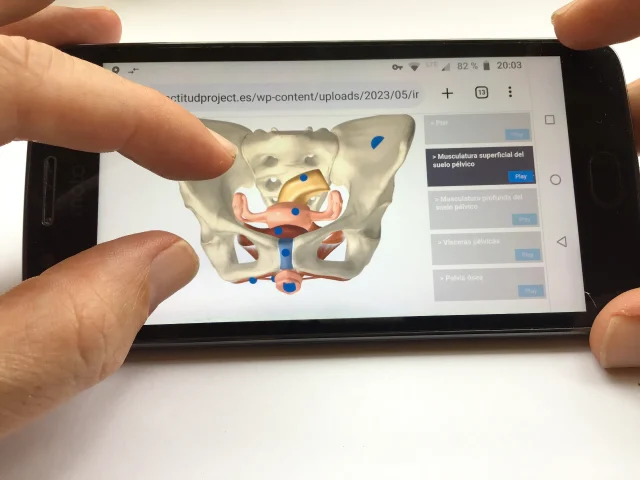The process of creating illustrations for scientific, medical publications often demands a special approach in the realization. Such publications almost always deals with a very special aspect of a field of knowledge. The possibility of usage of external sources for incorporation into the subject is only limited. The thematic depth and specialization of the content makes a close collaboration with the author mostly indispensable.
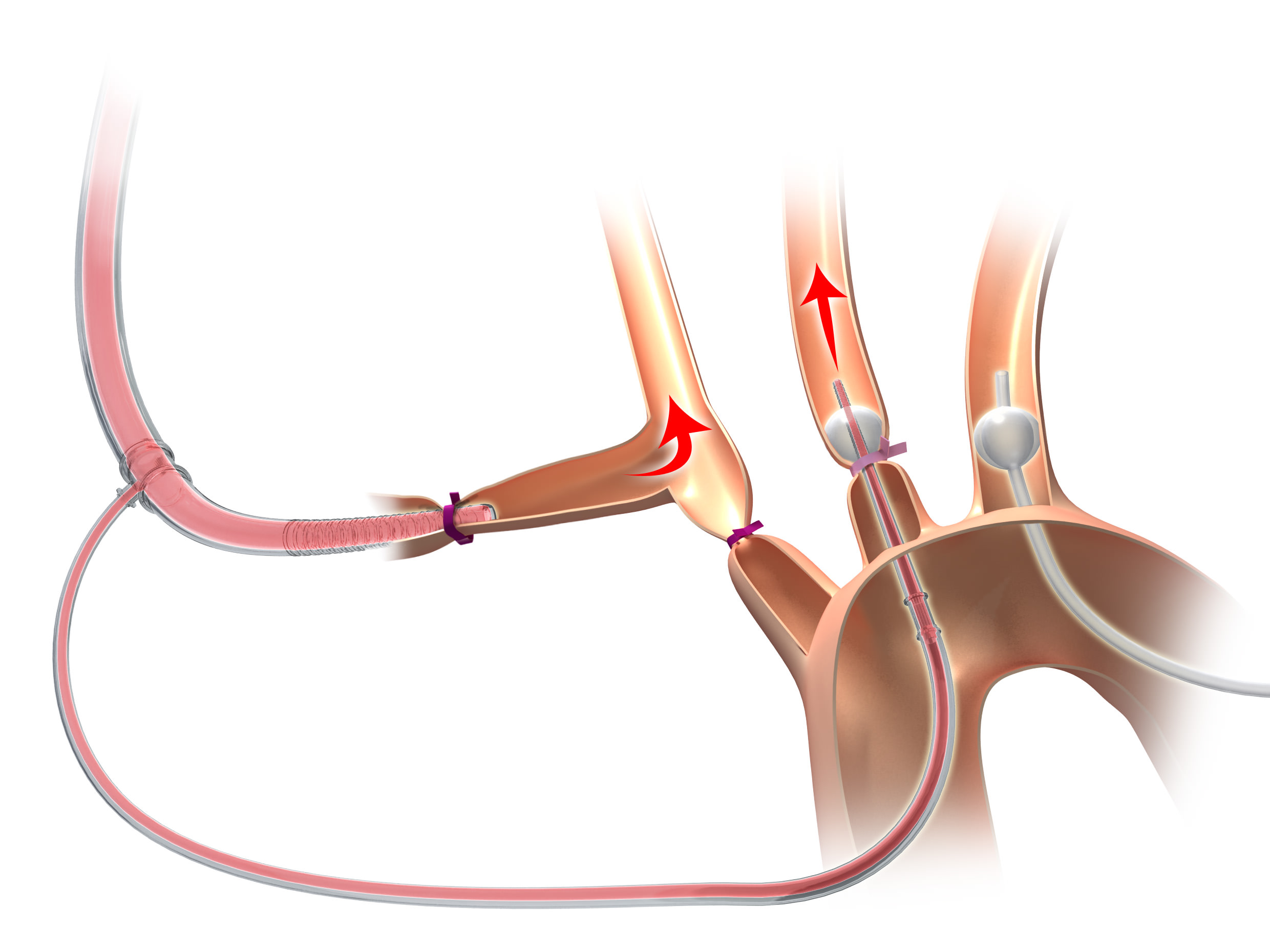 A broad substantive elaboration on textual level was in all projects for professional publications at the beginning of each process. The goal here was to understand the core elements and principles of the subject and then be able to define the key points of the proposed illustrations. Depending on the subject and author this phase was done either textually or by sketches. Due to the complexity of the issues, it was often necessary to focus on the main aspects and not to try to really compress all aspects of the publication in one picture. This could lead to a loss of the explanatory nature of the illustrations.
A broad substantive elaboration on textual level was in all projects for professional publications at the beginning of each process. The goal here was to understand the core elements and principles of the subject and then be able to define the key points of the proposed illustrations. Depending on the subject and author this phase was done either textually or by sketches. Due to the complexity of the issues, it was often necessary to focus on the main aspects and not to try to really compress all aspects of the publication in one picture. This could lead to a loss of the explanatory nature of the illustrations.
 Based on the sketches previously created the illustrations were then further elaborated and finalized so that it could be submitted as part of the publication for reviewing.
Based on the sketches previously created the illustrations were then further elaborated and finalized so that it could be submitted as part of the publication for reviewing.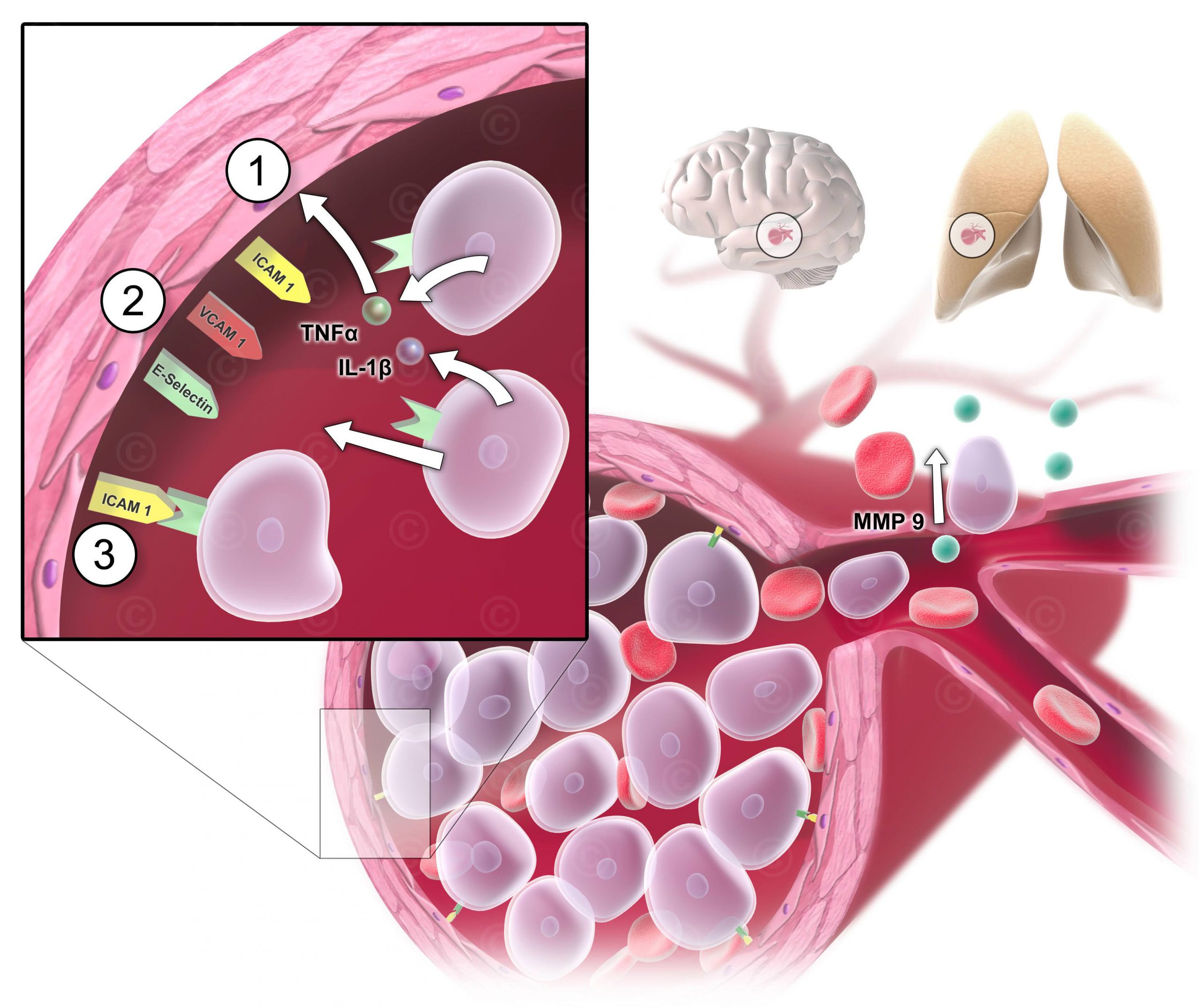
The special challenges that go with an activity in this area are describing by three projects for medical publications in the following.
The exemplarily productions are two publications by Dr. med. Nestoras Papadopoulos from the University Hospital Frankfurt about studies on “cerebral perfusion” and “catheter-based aortic valve implantation” and a publication by PD Dr. med. Christoph Röllig the Faculty of Medicine TU Dresden on “pathogenesis of leucostasis in acute myeloid leukemia.”
Perfusion during an operation of the aorta

As a basis for the illustration for perfusion during surgery in the aorta, Dr. Papadopoulos made a sketch with whose help we understood the principle of the surgery. An arterial cannula into the subclavian artery is introduced in the process. This is connects to the arterial branch of the cardiopulmonary bypass. From the arterial limb a Y catheter goes off, in which a perfusion is connected. This catheter is inserted into the common carotid artery and a balloon located in its peak is inflated. The subclavian artery is blocked with a Forgathy catheter. The base of the trunk bracheocephalicus and the basis of the common carotid artery are snared with Vessel loops.
With the sketch and the subsequent communication we were able to validate the structure of the medical procedure and clarify further questions of detail.
To avoid distracting the focus from the actual surgical method we decided, contrary to the original sketch, to dispense the the heart valves and also open up the outgoing vessels plastically to better show the placement of the catheter.
(Selective antegrade cerebral perfusion and mild (28°C-30°C) systemic hypothermic circulatory arrest for aortic arch replacement: results from 1002 patients. J Thorac. Cardiovasc. Surg., 2012 vol. 144(5) pp. 1042-49, Zierer, A; El-Sayed Ahmad, A; Papadopoulos, N; Moritz, A; Diegeler, A; Urbanski, PP)
U-stitching techniques for hemostasis in transcatheter aortic valve replacement
 For the project to achieve hemostasis in a minimally invasive catheter-based TAVI implantation of aortic valve prostheses OP, also a sketch stood at the beginning of the project. The TAVI method (transcatheter aortic valve implantation) is particularly suitable for high-risk patients with aortic stenosis. Content of the publication was an investigation of a special stitching techniques, which leads to a reduction of bleeding. The illustration shows the preparation prior to the introduction of the flap. Important here was that between the two
For the project to achieve hemostasis in a minimally invasive catheter-based TAVI implantation of aortic valve prostheses OP, also a sketch stood at the beginning of the project. The TAVI method (transcatheter aortic valve implantation) is particularly suitable for high-risk patients with aortic stenosis. Content of the publication was an investigation of a special stitching techniques, which leads to a reduction of bleeding. The illustration shows the preparation prior to the introduction of the flap. Important here was that between the two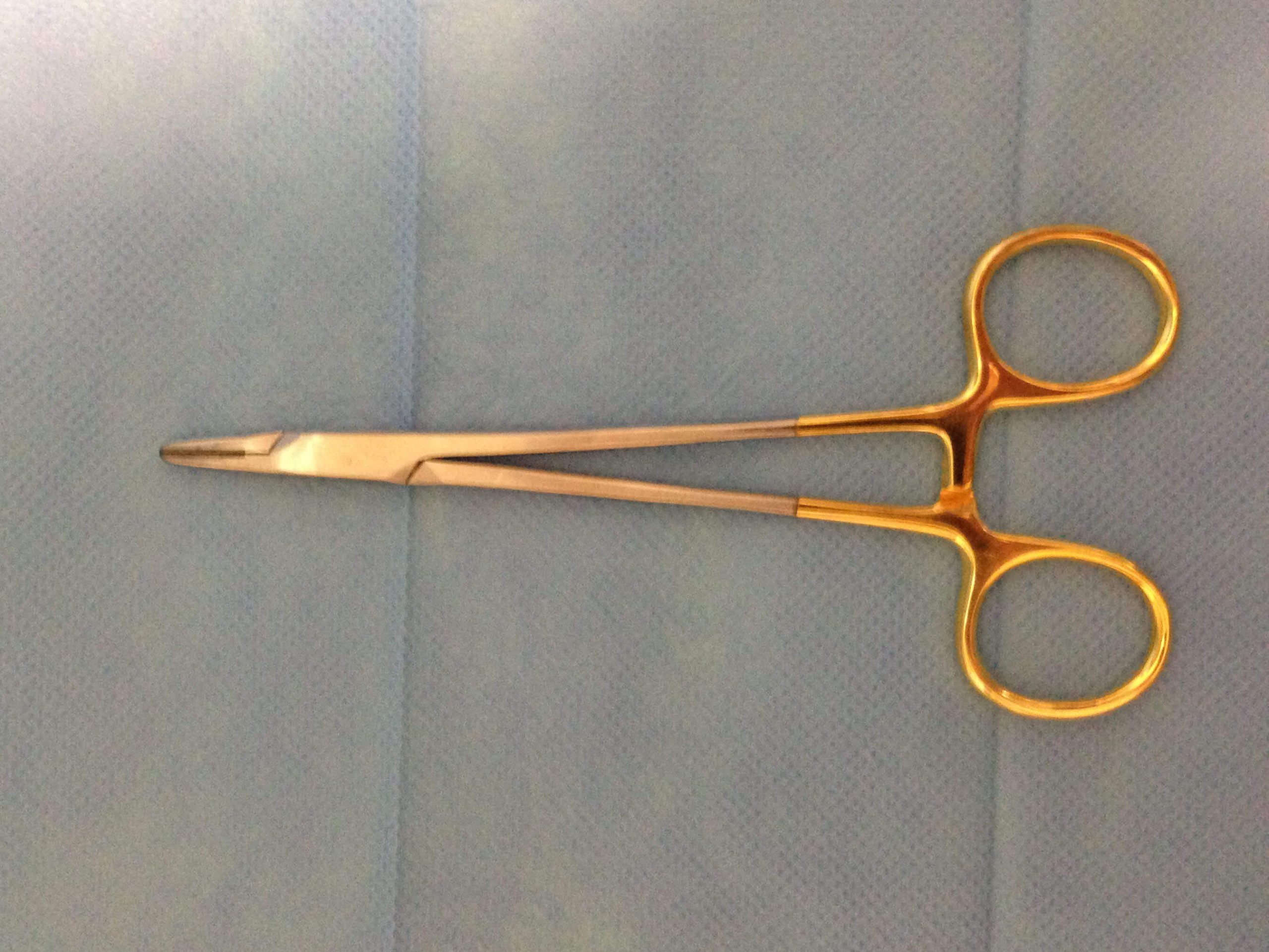 felt strips myocardium could be seen and that the seam was in the fokus. A strip of felt between seam and myocardium is placed to ensure extra stability and to minimize the risks of rupture of the ventricle. The tourniquet is used in this procedure as an additional pulling tool during the insertion of the valve.
felt strips myocardium could be seen and that the seam was in the fokus. A strip of felt between seam and myocardium is placed to ensure extra stability and to minimize the risks of rupture of the ventricle. The tourniquet is used in this procedure as an additional pulling tool during the insertion of the valve.
Photos of the elements such as needle holders, tourniquet and felts made available by the authors  helped to define the the look of this objects. Based on these images the structure and materiality of the elements are understood and then implemented by Medical Graphics as 3D models.
helped to define the the look of this objects. Based on these images the structure and materiality of the elements are understood and then implemented by Medical Graphics as 3D models.
With this information, a first rough draft of the illustration was created, in which the author’s drew in corrections to the alignment of the felts und the form of the needle holder tip. After communicating this last details the illustration could be finalized.
Propensity matched analysis of longterm outcomes following transcatheter based aortic valve implantation versus classic aortic valve replacement in patients with previous cardiac surgery – Nestoras Papadopoulos1*, Nina Schiller1, Stephan Fichtlscherer2, Ralf Lehmann2, Christian F Weber3, Anton Moritz1, Mirko Doss1 and Andreas Zierer1
http://www.cardiothoracicsurgery.org/content/9/1/99
Illustration of the pathogenesis of leucostasis in acute myeloid leukemia
The topic of the illustration was a leucostasis caused by a leukemia disease, which means a disturbed microcirculation in the vessels. However, the publication of Dr. Röllig was not referring to the purely mechanical (“rheological”) explanation of damage occurring at a leucostasis under a leukemia, but on other cellular findings.
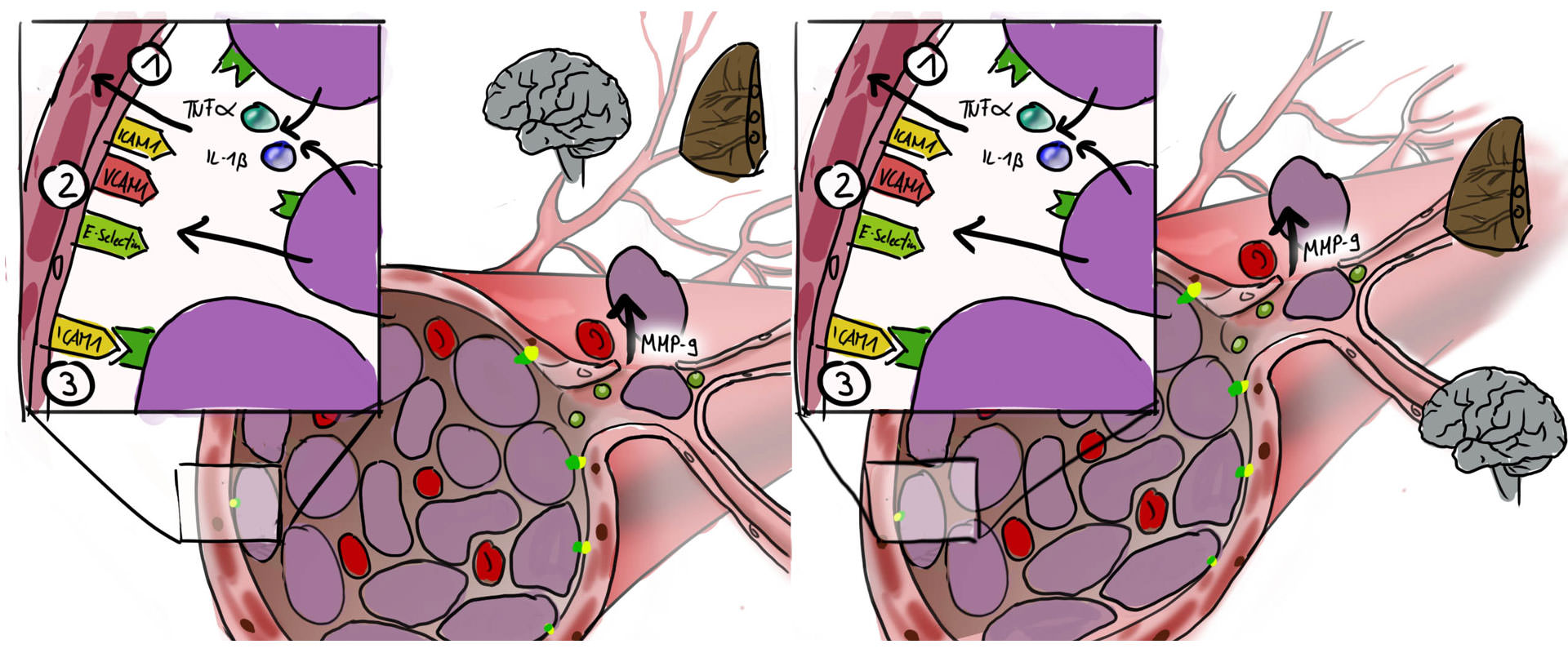 The myeloblasts secrete TNF-alpha and IL-1-beta and thus stimulate an expression of ICAM-1, VAM-1 and selections by the endothelial cells. These molecules allow blast cells to dock to the vessel wall and strengthen the leucostasis because they represent a solid flow obstruction. In addition, the blast cells cause tissue damage by extravasation and infiltration of surrounding tissue, for which the formation and expression of matrix metalloproteinases (MMP) is necessary.
The myeloblasts secrete TNF-alpha and IL-1-beta and thus stimulate an expression of ICAM-1, VAM-1 and selections by the endothelial cells. These molecules allow blast cells to dock to the vessel wall and strengthen the leucostasis because they represent a solid flow obstruction. In addition, the blast cells cause tissue damage by extravasation and infiltration of surrounding tissue, for which the formation and expression of matrix metalloproteinases (MMP) is necessary.
 In this project, the definition of the content were mainly done by email and telephone. Due to the complexity of the subject a detailed sketch was created to coordinate the content. Two slightly different sketches about the arrangement of the relevant organs (lungs and brain) were created, Dr. Röllig decided on a horizontal arrangement of the structures and added more cells at the center of the illustration.
In this project, the definition of the content were mainly done by email and telephone. Due to the complexity of the subject a detailed sketch was created to coordinate the content. Two slightly different sketches about the arrangement of the relevant organs (lungs and brain) were created, Dr. Röllig decided on a horizontal arrangement of the structures and added more cells at the center of the illustration.
After the structure and content were defined by the sketcha and the additional comments, the illustration could be finalized by creating the neccessary 3D objects and the final picture was rendered.
How I treat hyperleukocytosis in acute myeloid leukemia – Christoph Röllig and Gerhard Ehninger






